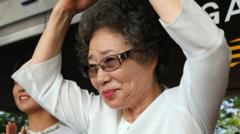As cafes in South Korea become popular study spots for students, particularly in affluent neighborhoods, a conflict is arising between business viability and individuals’ need for productive spaces. Recent incidents reveal that customers frequently monopolize seating for extended hours, sometimes using multiple devices. Starbucks has enacted new guidelines to combat this issue, while independent cafes adopt diverse approaches to maintain a comfortable environment for all patrons.
The Dilemma of Cafe Culture: Balancing Student Use and Business Viability in South Korea

The Dilemma of Cafe Culture: Balancing Student Use and Business Viability in South Korea
South Korean cafes are grappling with the rise of 'Cagongjok,' as students and workers seek long stays, prompting establishments to revise policies.
The ongoing phenomenon, termed 'Cagongjok,' has led to widespread discussions about public space usage amid growing competition in the coffee shop market.
---
In affluent areas of Seoul, cafe culture faces a modern challenge as students and young professionals, collectively known as 'Cagongjok,' increasingly occupy coffee shops for prolonged periods. The situation has escalated with reports of customers setting up elaborate workstations, including multiple laptops and power strips, prompting establishments like Starbucks to implement new guidelines aimed at curbing these extreme setups.
Hyun Sung-joo, a cafe owner in Daechi, highlights the impact of long-staying customers on business, explaining that limiting access to power outlets became a necessary measure. "With Daechi's high rents, it's difficult to run a cafe if someone occupies a seat all day," he noted, illustrating the tension between accommodating customers and ensuring business sustainability.
The cultural phenomenon of Cagongjok has developed in conjunction with South Korea's growth in cafe franchises since 2010, leading to an overload of studying patrons. Starbucks Korea recently reported that while they do not intend to expel customers, they aim to guide those whose setups disrupt others. The company acknowledged past incidents of theft from unattended belongings, prompting their move toward stricter regulations.
Reactions to Starbucks' new policy indicate mixed feelings. While many patrons who visit for conversation appreciate the efforts to restore balance and accessibility, some critics argue it restricts the open environment that enabled them to study in the first place.
This situation is not isolated to Starbucks. Several independent cafes across South Korea have adopted varying strategies to address the challenge of customers monopolizing tables. While some have imposed a time limit for studying, others maintain a flexible atmosphere, welcoming long-staying patrons as long as they purchase food or drinks.
The trend of working in cafes is not merely a convenience; for some individuals, it represents a safe harbor. Yu-jin Mo, who faced instability in her upbringing, finds comfort in cafe environments over libraries or home. This resonates with a broader societal context where young people feel pressure from competitive academic and job markets.
Choi Ra-young, a professor specializing in lifelong education, suggests that Cagongjok embodies a cultural shift influenced by societal expectations. She argues for more inclusive spaces that can accommodate the needs of both those seeking refuge and customers looking for social interaction.
As the popularity of cafes continues to grow, weighing the needs of diverse patrons within a competitive business landscape remains a complex and pressing challenge in South Korea.
---
In affluent areas of Seoul, cafe culture faces a modern challenge as students and young professionals, collectively known as 'Cagongjok,' increasingly occupy coffee shops for prolonged periods. The situation has escalated with reports of customers setting up elaborate workstations, including multiple laptops and power strips, prompting establishments like Starbucks to implement new guidelines aimed at curbing these extreme setups.
Hyun Sung-joo, a cafe owner in Daechi, highlights the impact of long-staying customers on business, explaining that limiting access to power outlets became a necessary measure. "With Daechi's high rents, it's difficult to run a cafe if someone occupies a seat all day," he noted, illustrating the tension between accommodating customers and ensuring business sustainability.
The cultural phenomenon of Cagongjok has developed in conjunction with South Korea's growth in cafe franchises since 2010, leading to an overload of studying patrons. Starbucks Korea recently reported that while they do not intend to expel customers, they aim to guide those whose setups disrupt others. The company acknowledged past incidents of theft from unattended belongings, prompting their move toward stricter regulations.
Reactions to Starbucks' new policy indicate mixed feelings. While many patrons who visit for conversation appreciate the efforts to restore balance and accessibility, some critics argue it restricts the open environment that enabled them to study in the first place.
This situation is not isolated to Starbucks. Several independent cafes across South Korea have adopted varying strategies to address the challenge of customers monopolizing tables. While some have imposed a time limit for studying, others maintain a flexible atmosphere, welcoming long-staying patrons as long as they purchase food or drinks.
The trend of working in cafes is not merely a convenience; for some individuals, it represents a safe harbor. Yu-jin Mo, who faced instability in her upbringing, finds comfort in cafe environments over libraries or home. This resonates with a broader societal context where young people feel pressure from competitive academic and job markets.
Choi Ra-young, a professor specializing in lifelong education, suggests that Cagongjok embodies a cultural shift influenced by societal expectations. She argues for more inclusive spaces that can accommodate the needs of both those seeking refuge and customers looking for social interaction.
As the popularity of cafes continues to grow, weighing the needs of diverse patrons within a competitive business landscape remains a complex and pressing challenge in South Korea.



















